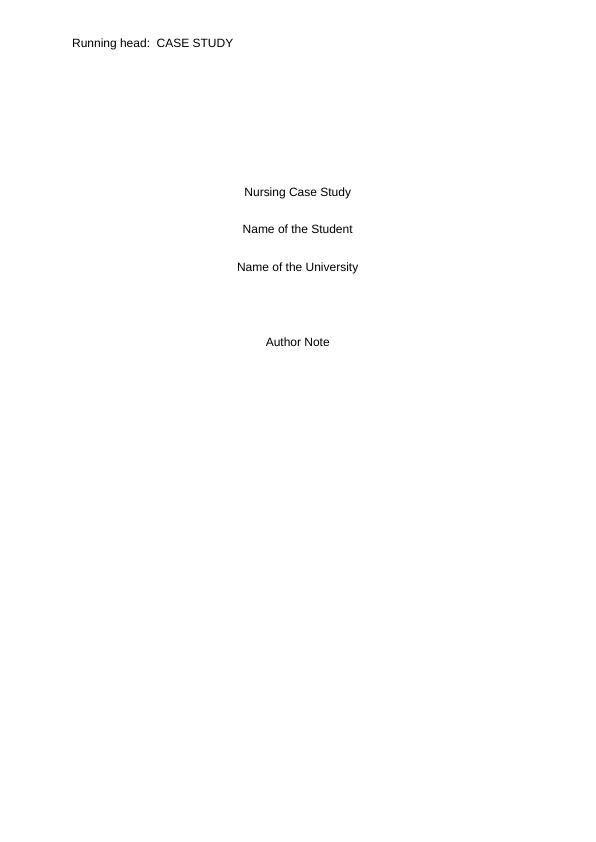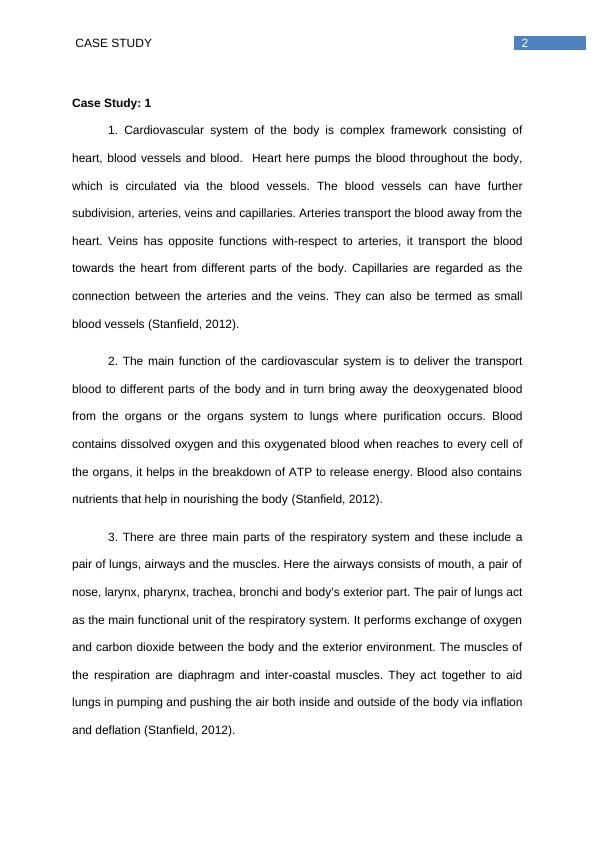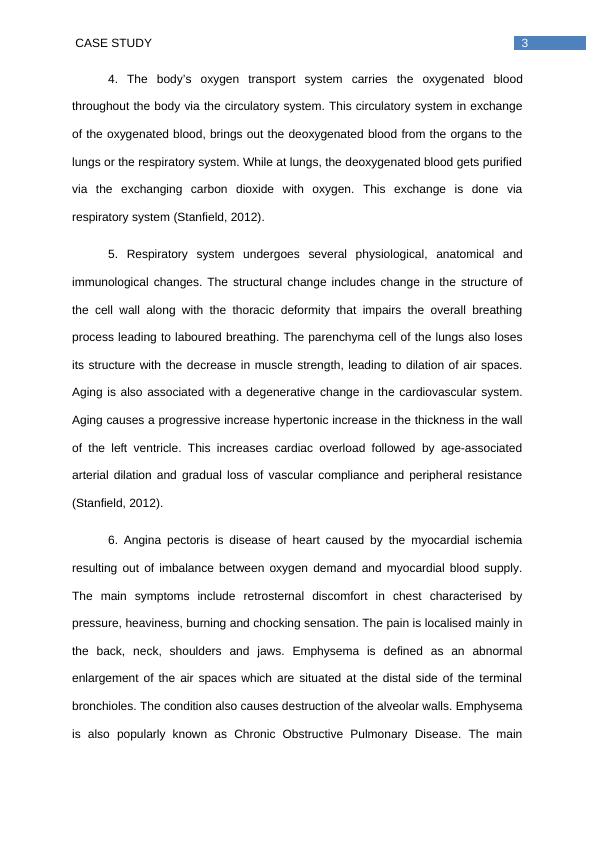Case Study: 1 2 5 Case Study: 3 11 References 15 Case Study: 1 1. Cardiovascular System of the Body
17 Pages3611 Words314 Views
Added on 2020-04-21
About This Document
The main function of the cardiovascular system is to deliver the transport blood to different parts of the body and in turn bring away the deoxygenated blood from the organs or the organs system to lungs where purification occurs. This circulatory system in exchange of the oxygenated blood, brings out the deoxygenated blood from the organs to the lungs or the respiratory system. The structural change includes change in the structure of the cell wall along with the thoracic deformity that impairs the overall breathing process leading to labour
Case Study: 1 2 5 Case Study: 3 11 References 15 Case Study: 1 1. Cardiovascular System of the Body
Added on 2020-04-21
ShareRelated Documents
End of preview
Want to access all the pages? Upload your documents or become a member.
HLTAAP002 - Confirm physical health status Assignment
|16
|4498
|125
Cardiovascular System Assignment 2022
|5
|497
|8
Transport System in Multi Cellular Organisms
|14
|2428
|51
Cardiovascular System | Essay
|8
|2005
|23
SCIE207 Phase 4 Lab Report Part 2: Exploring Endocrine, Circulatory, and Respiratory Systems
|4
|818
|232
Anatomy and Physiology Essay 3&4 on Human Vascular System and Facial Artery
|4
|1339
|440




